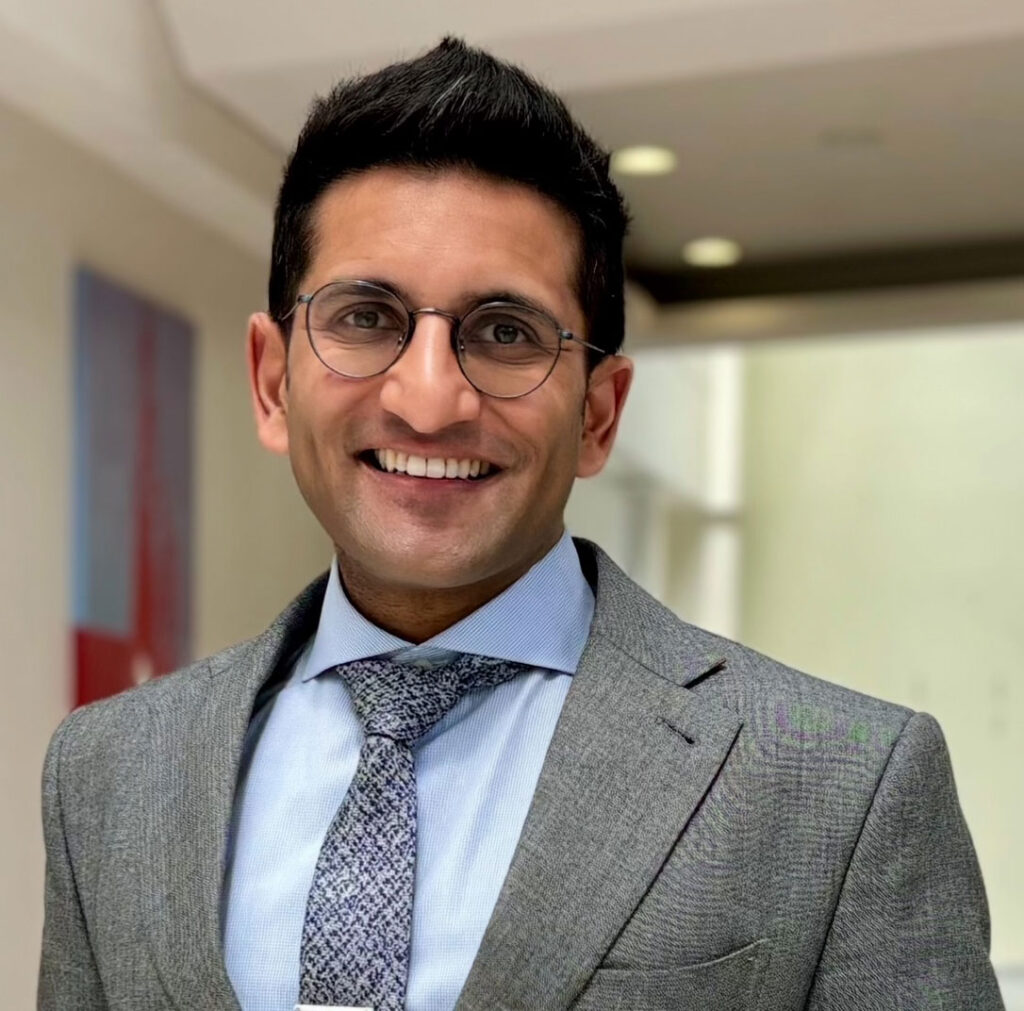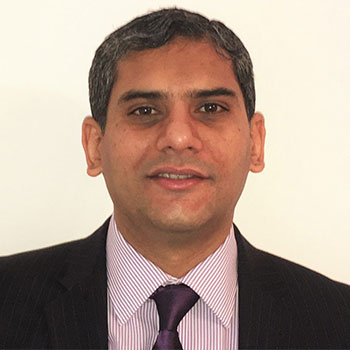What are adenoids?
Adenoids are small lumps of tissue at the back of a child’s nose where the nose meets the throat. They are part of the immune system and help fight germs that enter the body through the nose and mouth. Adenoids act as the first line of defence by trapping bacteria and viruses, so infections don’t spread further into the respiratory tract.
In most kids, adenoids are small and don’t cause any problems. But in some cases, adenoids can become enlarged due to frequent infections or allergies. Enlarged adenoids can block the child’s airway, making it hard for them to breathe through their nose. This can cause mouth breathing and breathing problems during sleep, such as snoring or sleep apnoea.
Enlarged adenoids can also cause sinus infections by blocking nasal airflow and preventing proper sinus drainage. Removing the adenoids can help clear these blockages and reduce the risk of recurring sinus problems.
Because adenoids are near the Eustachian tubes, which connect the middle ear to the throat, enlarged adenoids can also cause ear problems. These problems include frequent ear infections and otitis media with effusion, a condition in which fluid builds up behind the eardrum, potentially leading to hearing loss.
Adenoid tissue tends to shrink as kids grow older, often reducing symptoms naturally. But when enlarged adenoids cause persistent health issues or interfere with normal breathing and hearing, adenoid removal surgery may be recommended to improve the child’s quality of life.
Alternatives to adenoid removal surgery
In some cases, alternatives to adenoid removal surgery may be recommended. One option is antibiotics to treat recurring ear infections or sinus infections.
Nasal sprays are another option. These can help reduce swelling in the nasal passages, improve breathing and reduce the frequency of infections.
In some cases, a tonsillectomy may be recommended in addition to, or instead of, an adenoidectomy. This involves removing the tonsils, which can also contribute to breathing and infection issues.
Watchful waiting is another approach. In some instances, doctors may recommend monitoring the condition to see if the adenoids shrink on their own as the child grows older. This is often used when the symptoms are not severe. Other options, such as allergy testing or immunotherapy, may be recommended to address underlying problems that are causing the symptoms. These can provide relief without surgery, depending on your child’s specific condition.
Please call to enquire about the price
Ways to payBefore surgery
Initial consultation
The initial consultation is the first step in deciding whether to proceed with adenoid removal surgery. During this appointment, the doctor will review your child’s medical history and current symptoms. This may include questions about the frequency of ear infections, breathing difficulties, sleep problems and any previous treatments your child has had.
The doctor may perform a physical examination of the child’s nose, throat and ears to assess the size of the adenoids and check for signs of infection or blockage. In some cases, additional tests such as a nasal endoscopy or imaging studies may be recommended to get a better view of the adenoids and surrounding structures.
This is also an opportunity for parents to ask questions and discuss any concerns they may have about the surgery, including the procedure itself, recovery time, potential risks and expected outcomes. The doctor will explain the benefits of adenoid removal surgery and help determine if it’s the best option for your child’s condition.
If surgery is recommended, the doctor will provide detailed preoperative instructions to prepare your child for the procedure, including information on medications, fasting before surgery and what to expect on the day of the operation.
Preparing for surgery
Before your child’s adenoidectomy, make sure to follow the specific guidelines to ensure a smooth procedure and recovery. Discuss any medications your child is currently taking with the doctor to determine which can be continued or stopped before the surgery. If your child has a sore throat or cold in the week leading up to the surgery, inform the surgeon as the procedure may need to be postponed for a few weeks to ensure your child’s safety.
On the day of the surgery, only give your child the medications approved by the doctor. Proper medication management is key to a successful recovery, so follow the instructions carefully.
During surgery
At the start of the procedure, the child will be placed under general anaesthesia so they will be asleep and pain-free throughout the operation. The surgeon will remove the adenoids through the mouth, with no external incisions or visible scars. The procedure takes about 20-30 minutes. In some cases, adenoid removal is performed in conjunction with a tonsillectomy if the child has enlarged tonsils that contribute to breathing or infection problems.
Throughout the surgery, the medical team will monitor the child’s vital signs to ensure their safety. After the adenoids are removed, the surgeon will check for any bleeding and make sure the surgical site is secure before waking the child up from anaesthesia.
After surgery
After the adenoid removal surgery, your child will be taken to the recovery room where medical staff will monitor their vital signs as they wake up from anaesthesia. It’s normal for children to feel groggy and disorientated initially. The recovery room stay is usually brief, a few hours, depending on how quickly your child recovers from the anaesthesia.
Pain management is a crucial aspect of immediate post-surgical care. Your child may feel a sore throat, mild ear pain or discomfort in the nose and throat area. The doctor will provide pain relief medications to help manage these symptoms. Ensure you follow the prescribed dosage and schedule to keep your child comfortable and well.
To reduce pain and swelling, offer cold foods like ice cream, yoghurt or chilled drinks. Encourage your child to rest and avoid strenuous activities during the initial recovery period.
Your child may experience bad breath after surgery, which is a regular and temporary condition that should improve as the healing process progresses. Ensure good oral hygiene, but avoid vigorous brushing in the area near the surgical site.
Parents should watch for signs of bleeding, difficulty breathing or severe pain and contact their doctor immediately if these occur. Ensure your child gets plenty of rest and follows all post-operative instructions to facilitate a smooth and complete recovery.
Long-term recovery
Long-term recovery after an adenoidectomy is usually smooth, and most children are back to normal activities within a week.
Parents should monitor their child’s recovery and contact their doctor if they notice any unusual symptoms.
Risks and complications
As with any surgical procedure, adenoid removal comes with some potential risks and complications, though they are uncommon. One of the primary concerns is bleeding, but this is rare and your surgeon will take steps to minimise the risk. There’s also a slight chance of infection, which may be prevented or treated with antibiotics if needed.
Some children might have temporary breathing difficulties after the surgery. These are usually short-lived and can be effectively managed with close monitoring and care.
While the likelihood of complications is low, it’s essential to have a thorough conversation with your doctor so that you feel fully informed and confident before proceeding with the procedure.
Appointment and Treatment Plan
Initial Consultation
The doctor reviews your child’s symptoms and examines the nose, throat, and ears. Imaging or endoscopy may be used. Surgery is discussed if adenoids are enlarged or causing issues.
Pre-operative Preparation
Follow fasting and medication instructions. Let the doctor know if your child has a cold or sore throat close to the surgery date – it may need to be rescheduled.
Surgery
Done under general anaesthesia. Adenoids are removed through the mouth – no cuts or visible scars. Takes 20-30 minutes. Sometimes done with tonsillectomy if needed.
Immediate Post-surgery Care
Your child may feel groggy and sore. Pain relief will be provided. Offer cold soft foods and keep them resting. Bad breath is normal short term.
Long-term Recovery
Most children recover fully within a week. Watch for signs of bleeding or breathing issues and follow up with your doctor as needed.
Experts
We are proud to provide patients with access to a wide range of clinicians, chosen specifically for their knowledge and reputation in their area of expertise. Our experts align with our values: putting you at the centre of your care and educating you on your options at each step of the journey. We encourage you to learn more about our clinicians and how they can help you below. As always, please contact our patient services team if you require any additional information.
We offer 3 ways to pay for your treatment
We exist to take the stress out of private healthcare.
Our payment options are designed to offer you easy access to our treatments and services. You can choose to pay on the day, spread the cost, or use your private medical insurance.
Our patient services team will guide you through the process, providing clear costs and support throughout your course of treatment so you can focus on the thing that matters most – your health.
Whether you pay in advance, spread the cost, or use your private medical insurance, rest assured you will be receiving exceptional care 365 days a year.
Pay in Advance
Even if you do not have medical insurance, you can still get quick and comprehensive access to private medical care.
We provide transparent pricing from your initial consultation to the completion of your treatment so you know where your stand, every step of the way.
We accept all major debit and credit cards, as well as Apple Pay for UK residents. Please note that we do not accept cash or cheques.
Pay monthly
Paying for your treatment at OSD Healthcare doesn’t need to mean settling the full cost in one go.
Many of our treatments have a pay monthly option that allows you to spread the cost of your treatment over 12 months with no credit checks required.
A minimum spend of £300 does apply. We’ll take your first payment upfront and then arrange a direct debit for your monthly payments thereafter. It’s that simple.
Pay using PMI
We are recognised by all major health insurance companies and with our extensive range of services, there are lots of benefits to using your insurance with us. Our patient services team is here to answer any questions you may have about using your private health insurance with us.
Please bring along your policy details including your scheme details, membership or policy number, expiry date and confirmation of eligibility to claim (i.e. your authorisation number). If you do not have these details with you, we will require payment from you on the day. Patients are liable for any amounts not settled by their insurer.
FAQs
Removing adenoids can be a good option for many children who have health issues due to enlarged adenoids. The decision to remove adenoids should be based on a thorough evaluation by a healthcare professional, considering factors such as the frequency of infections, breathing difficulties, and the impact on the child’s quality of life. Adenoid removal can lead to significant improvements in overall health, including a reduction in ear and sinus infections, improved breathing, and better sleep. However, as with any surgery, it’s good to weigh the benefits against the risks and discuss these with your doctor.
Adenoidectomy is usually done on children between 1 and 7 years old, as this is when adenoids are most active and likely to cause problems. However, the need for surgery is not age-dependent, but instead based on the severity of symptoms and their impact on the child’s health and development. Some children may outgrow adenoid problems as they age, so doctors may recommend monitoring the situation before deciding on surgery.
Signs that adenoids may need to be removed include frequent ear infections, chronic sinus infections, difficulty breathing through the nose, persistent nasal congestion, snoring, sleep apnoea and noticeable mouth breathing. If a child has hearing loss due to fluid in the middle ear or difficulty swallowing, these may be indicators that an adenoidectomy is necessary. Consulting with a healthcare provider can help determine if adenoid removal is the right course of action.
If adenoids are not removed when needed, children may continue to have chronic health issues like frequent infections, breathing difficulties and sleep disturbances. This can lead to ongoing discomfort and impact a child’s overall well-being and development. In some cases, untreated enlarged adenoids can cause hearing problems, speech delays and behavioural issues due to disrupted sleep patterns. Consult with a healthcare provider to determine the best course of action for your child.



